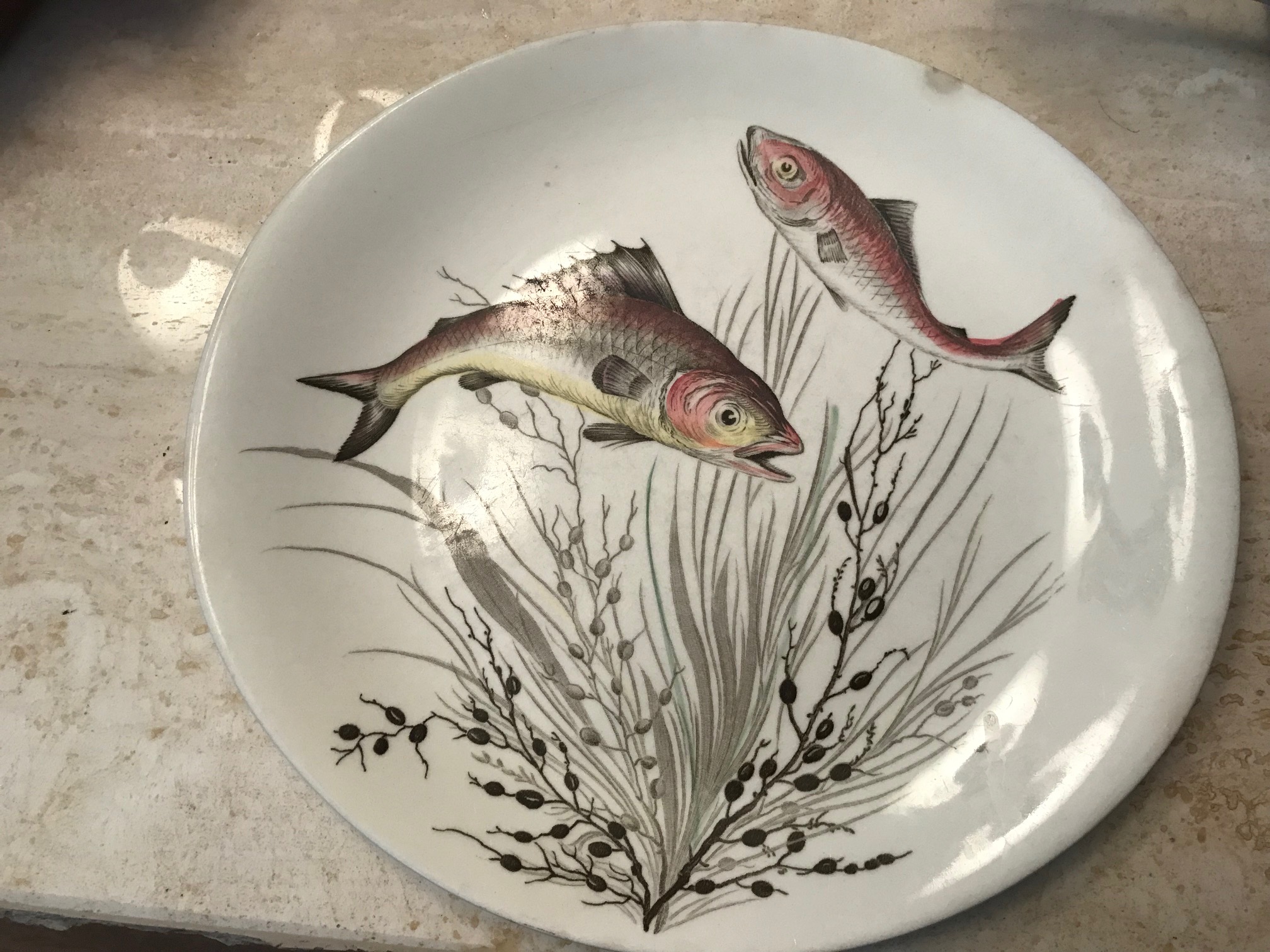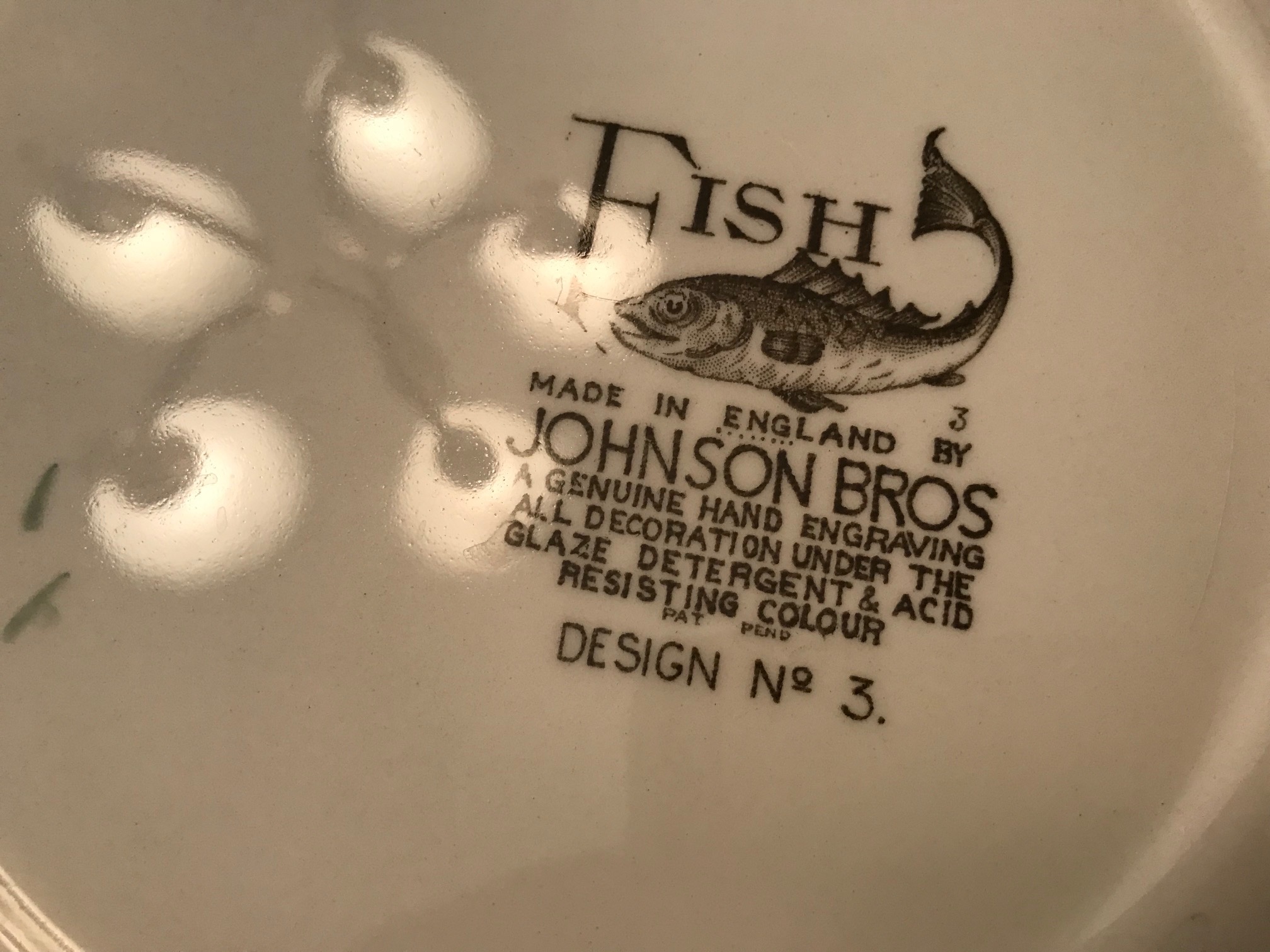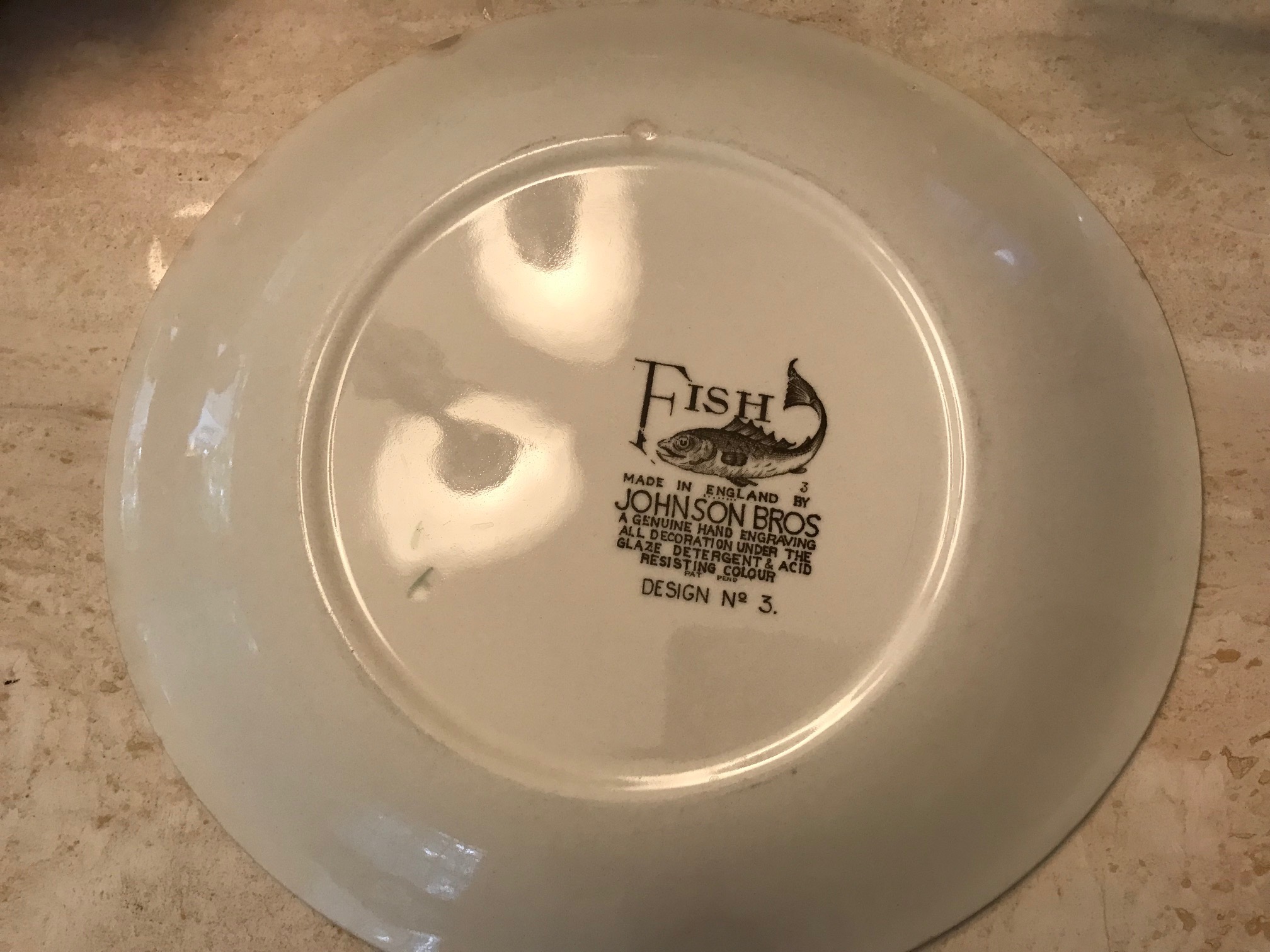Vintage Johnson Brothers Fish Plate (Design No. 3), Made in England: 70,800 ppm Lead (90 is unsafe for kids)
Please click the link for help finding safer choices for your holiday table.

“Made in England”
“Design No. 3”
“A genuine hand engraving”
“All decoration under the glaze. Detergent & acid resisting colour.”
For those new to the Lead Safe Mama website:
Tamara Rubin is a multiple-federal-award-winning independent advocate for childhood Lead poisoning prevention and consumer goods safety, and a documentary filmmaker. She is also a mother of Lead-poisoned children (two of her four sons were acutely Lead-poisoned in 2005).
- Tamara owns and runs Lead Safe Mama, LLC — a unique community collaborative woman-owned small business for childhood Lead poisoning prevention and consumer goods safety.
- Since 2009, Tamara has been conducting XRF testing (a scientific testing method) using the exact instrumentation employed by the U.S. Consumer Product Safety Commission to test consumer goods for toxicants (specifically heavy metals — including Lead, Cadmium, Mercury, Antimony, and Arsenic).
- Since July of 2022, the work of Lead Safe Mama, LLC has been responsible for 5 product recalls (FDA and CPSC).
- All test results reported on this website are science-based, accurate, and replicable.
- Items that Lead Safe Mama, LLC reports on are tested multiple times to confirm the results published (for each component tested).
- Recent notable press… There has been too much to mention already in 2024! Please check out our press page to see some of the amazing coverage of our work so far this year!
To see more Johnson Brothers pieces I have tested, click here.
When tested with an XRF instrument, this dish had the following readings:
- Lead (Pb): 70,800 +/- 3,200 ppm
- Mercury (Hg): Negative/Non-Detect
- Arsenic (As): Negative/Non-Detect
- Cadmium (Cd): Negative/Non-Detect
- Barium (Ba): Negative/Non-Detect
- Chromium (Cr): Negative/Non-Detect
- Antimony (Sb): Negative/Non-Detect
- Selenium (Se): Negative/Non-Detect
As a rule, ALL Johnson Brothers vintage china is very high in Lead and I would not consider it safe to eat off of. I would grade any and all vintage china from this brand as an “F.”
For context: When testing is done with an XRF instrument, the amount of Lead considered toxic in a newly manufactured item made today and intended for use by children is anything 90 ppm Lead or higher in the glaze or coating, and anything 100 ppm Lead or higher in the substrate*.
High Lead levels found in a piece like this are generally in the glaze (the coating), not the substrate (the clay).
*There is currently no comparable regulatory action level or limit for XRF detectable levels of Lead found in dishware (vintage or new).
To learn more about XRF testing, click here.
To learn more about why Lead in vintage dishware may be a concern, please click here.
To see the #LeadFree dishes I use in my home, click here.
For more #SaferChoices for your family, click here.
To see more vintage dishes that I have tested for Lead, click here.
As always, thank you for reading and sharing these results.
Please let me know if you have any questions.
Tamara Rubin
#LeadSafeMama
To make a contribution in support of Lead Safe Mama’s independent consumer goods testing and Lead poisoning prevention advocacy work, click here. Thank you!
Never Miss an Important Article Again!
Join our Email List











